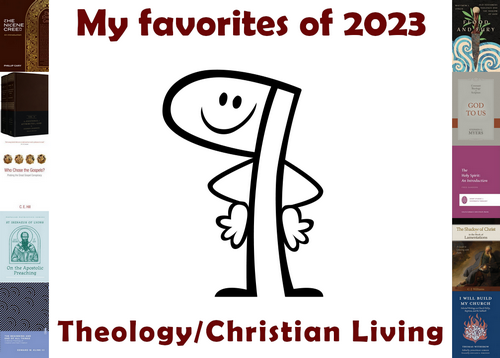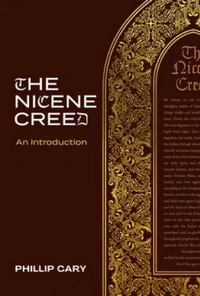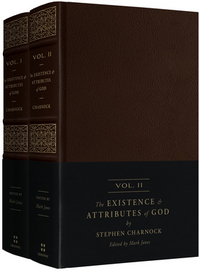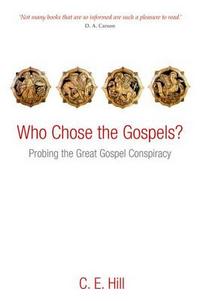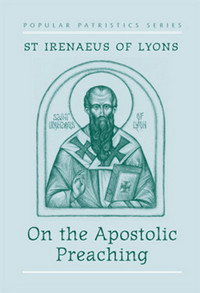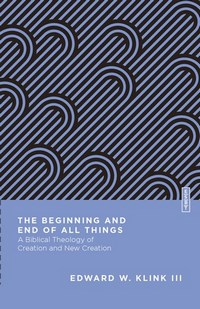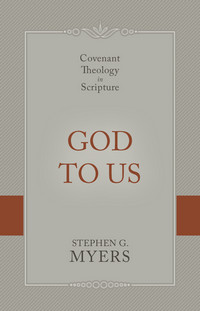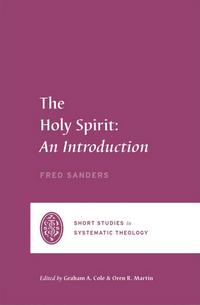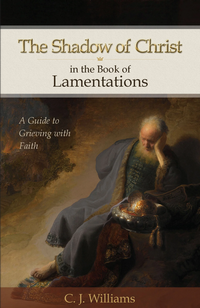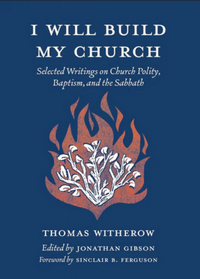 Divine Providence
Divine Providence
by Stephen Charnock, edited by Carolyn Whiting
DETAILS: Publisher: P&R Publishing Publication Date: September 1, 2022 Format: Hardcover Length: 268 pg. Read Date: June 16-30, 2024

What’s Divine Providence About?
Question and Answer 11 of the Westminster Shorter Catechism are:
Q. What are God’s works of providence?
A. God’s works of providence are his most holy, wise and powerful preserving and governing all his creatures, and all their actions.
In this classic work (updated for modern readers), Charnock does his best to explain that idea. It’s something that verges on the inexplicable—but something clearly taught in Scripture—and so Charnock seeks to help his readers (originally, hearers) understand it. He doesn’t really engage in debate about it, or defend it against attacks—he does tackle some objections or hard parts to grapple with. But he’s not doing that in a polemic way, mostly he seems to work from the assumption that if he clarifies the doctrine and clears up misconceptions, that’ll be enough. (also, he’s not really trying to engage with naysayers)
That’s basically the first 13 chapters—133 pages or so, almost half the book. The second half is applying that to the Church and individual believers. I remember a former pastor of mine saying that this (and related) doctrines in Scripture weren’t used in the way most contemporary people use them—to beat up on believers who don’t quite agree with us on providence, predestination, election, and whatnot. Instead, the inspired writers used them to comfort, encourage, and give confidence to believers. And that’s just what Charnock does in the second half.
He starts by describing how Providence is an expression of care and protection for the Church and how we see that. Then he focuses on individual Christians, and how we can find comfort and encouragement in all things from these teachings. Even the last chapter here, “The Duty Providence Requires,” is made up of items like “believe in God’s work,” “remember what He as done,” “wait patiently for Him.” and so on—things that really call for the confidence I mentioned earlier to be expressed.
Bonus materials
Before the introductions, prefaces, etc. the reader is presented with a nine-page outline of the work—which is a great bonus and will be very helpful for students and other readers really wanting to dive into the nitty-gritty of this work.
The editor has also broken this down into clearer chapters (see below) and added summary paragraphs to each chapter to help the reader (I’m not sure how helpful those ultimately were and stopped reading them pretty quickly).
There are also study/discussion questions provided at the end of every chapter. They don’t seem too bad—but again, I didn’t spend much time looking at those. But I think they’ll be a strong selling point for many.
The Modernizing of it All
In the Editor’s Preface, Carolyn Whiting states that
I sought to retain the author’s meaning while updating the language and style, sentence by sentence, to make it more accessible for today’s reader. The original volume, which was a compilation of a series of Charnock’s sermons, had no chapters or subheads and few paragraphs. In addition to adding these features, I have inserted the occasional transition, updated spelling and pronouns for a contemporary audience, replaced archaic vocabulary with modern equivalents, and updated Scripture to the English Standard Version except where noted.
Now, I get updating pronoun use, changing to ESV, and most of the other changes (although typically “language” means changing archaic words that have changed meanings, shortening sentences, etc.). The chapters and subheads idea is great—the original edition is tough to read just because of the organization. I have no issues with what Whiting stated there.
But then I started seeing (and I don’t know how often, but it happens a few times) footnotes saying “Charnock goes on to say…” and giving us a phrase or two beyond that. Why those phrases couldn’t be added above I didn’t once understand. But it tripped me up—just how much was Whiting doing to make Charnock accessible to the modern reader? I spent too much of my mental RAM wondering about that while reading and likely didn’t get as much out of it as I should’ve.
To give you a flavor here are the first few paragraphs of the book (and no, I don’t know why the line spacing is that way…I assure you, I’ve tried to stop it).
| This Edition In the beginning of 2 Chronicles 16, we find Baasha, king of Israel, building and fortifying Ramah. Situated on the road between Jerusalem and Samaria, Ramah is about twelve miles from Jerusalem, the metropolis of Judah and the seat of its king, Asa. Baasha intends to isolate Asa and to prohibit anyone from crossing the border between the two nations (v. 1). Baasha is probably afraid that the people of Israel will revolt and flee to Judah because Asa has reformed the practice of religion there. Therefore, Baasha fortifies Ramah to hinder and intercept any who try to pass by on that account. “For great numbers had deserted to [Asa] from Israe| when they saw that the Lorp his God was with him” (2 Chron. 15:9). When Asa realizes what Baasha is doing, he is afraid, and in his fear he sins by seeking help through worldly means rather than by turning to God. He enters into a covenant with Ben-hadad, king of Syria, who is a neighbor and an idolatrous prince, and purchases his assistance for the sacrilegious price of silver and gold from the temple treasury. His plan is for Ben-hadad to invade Israel’s territories and distract Baasha from fortifying Ramah. The large payment easily persuades Ben-hadad to break his covenant with Baasha, and his armies successfully take several cities, including all the store cities of Naphtali (2 Chron. 16:2-4). Baasha is forced to abandon Ramah in order to save his country, and Asa seizes the materials Baasha has left behind and uses them to build two cities, Geba and Mizpah (vv. 5-6). |
Original Text In the beginning of the chapter you find Baasha king of Israel raising walls about, and fortifying Ramah, a place about twelve miles from Jerusalem, the metropolis of Judah, intending by that means to block Asa up, because Ramah lay just upon the road between Jerusalem and Samaria, the seats of the two kings, ver. 1. Baasha was probably afraid of the revolt of Israel to Judah, upon that reformation of religion wrought by Asa, and therefore would fortify that place, to be a hindrance, and to intercept any that should pass upon that account; and to this purpose makes great preparation, as appears ver. 6, for with the provision Baasha had made for the fortification of Ramah, Asa, after the seizing of the materials, builds two towns, Geba and Mispah. Asa seeing Baasha so busy about this design, and fearing the consequence of it, hath recourse to carnal policy rather than to God; and therefore enters into league with Benhadad, a neighbour, though an idolatrous prince, and purchaseth his assistance with the sacrilegious price of the treasure of the temple, ver. 2, 3; and hereby engageth him to invade the king of Israel’s territories, that he might thereby find work for Baasha in another part, and so divert him from that design upon which he was so bent: ver. 3, ‘Go, break thy league with Baasha, that he may depart from me.’ Benhadad is easily persuaded by the quantity of gold, &c., to break his league, and make an inroad, and proves victorious, and takes many cities where the magazines and stores were laid up, ver. 4. Baasha now, to save his country, and make head against his enemies, is forced to leave Ramah; whereupon Asa, who watched his opportunity, seizeth the materials he had left for the fortifying of Ramah, and puts them to another use, ver. 5, 6. |
I can’t say the Whiting version is bad…but I don’t know that Charnock needed that much help. My son said it reminded him of copying something (encylopedia entry, article, etc.) for a report in school, but changing just enough of it so as not to be accused of plagiarism.
I do wonder if the wrong name is on the cover/title page, however.
So, what did I think about Divine Providence?
When I could stop focusing on the issues in the above section, I really appreciated the book. The first half was clearly the same kind of thinking seen in The Existence and Attributes of God.
Parts 2 and 3, the application of the doctrine to our lives and the Church? I absolutely loved that and was so encouraged it. There was so much there that was so good to see and be reminded of. It’s truly worth reading the book to get those parts (but you do need to read the first part—you can’t just jump into these sections, you need the foundation).
I can’t be as happy with this as I’d like—I just can’t get over the paraphrasing (for lack of a better term) bothers me more than it maybe should. I do think this is a lot easier to read than the non-modernized version (if only because mostly those are printed with tiny typefaces), and will reach more people. But the purist in me worries we lose too much of Charnock.
The important thing, however, is that Charnock is being brought to readers in a digestible manner. I do encourage people to pick it up because of that.

This post contains an affiliate link. If you purchase from it, I will get a small commission at no additional cost to you. As always, the opinions expressed are my own.
![]()



